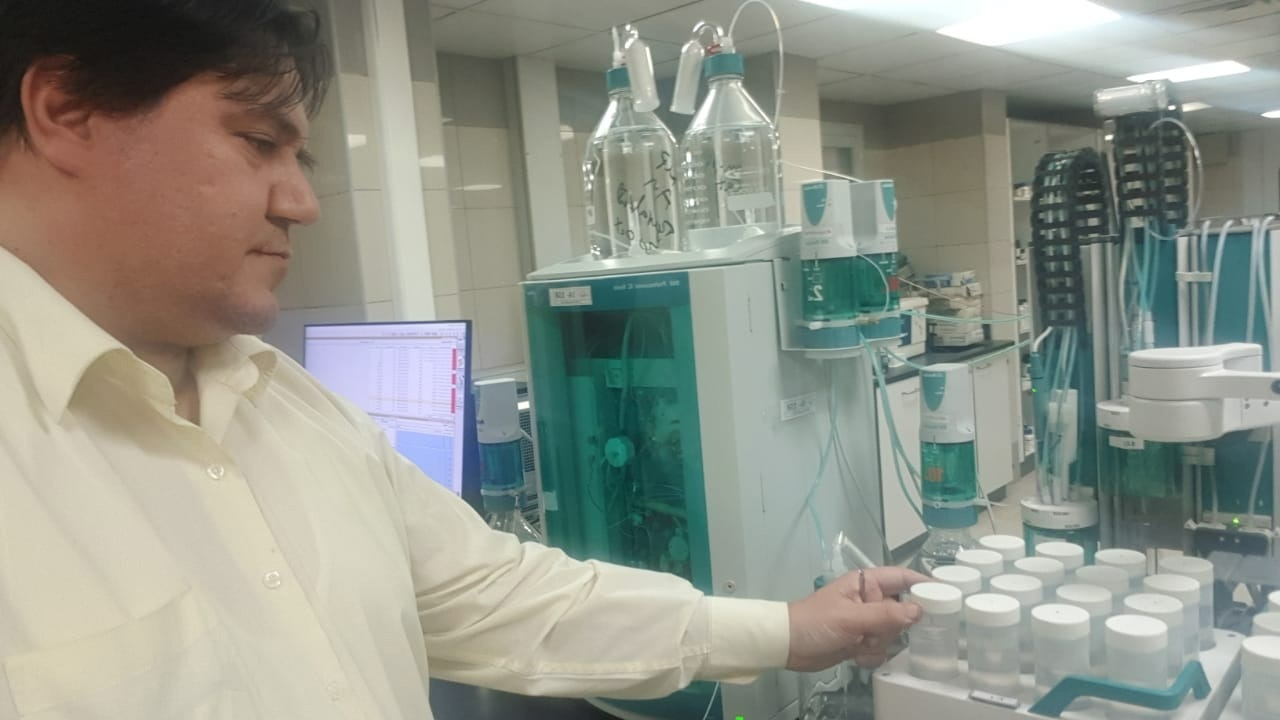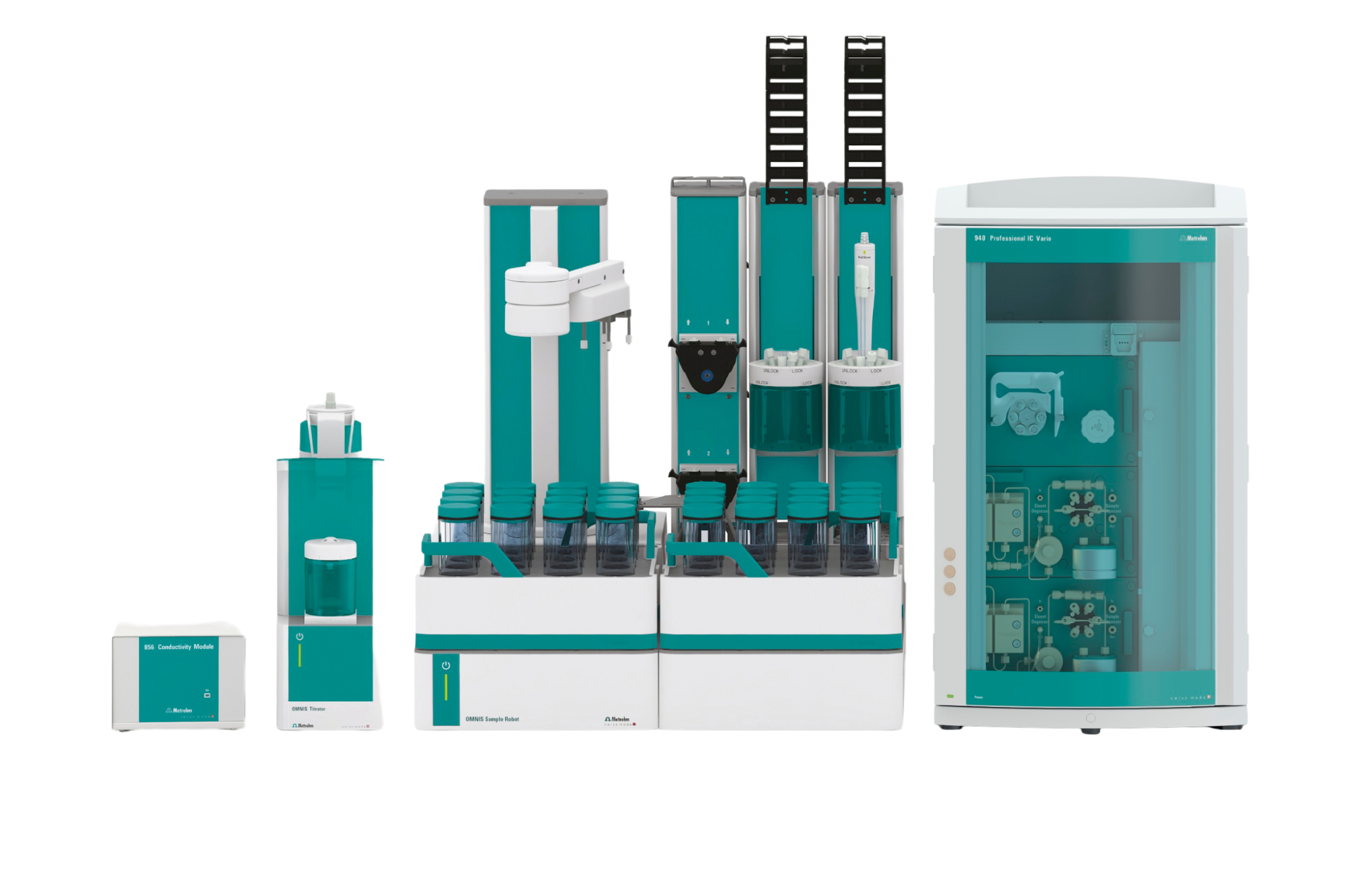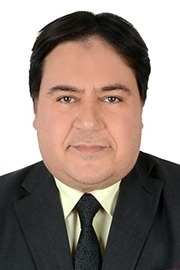In this interview, AZoM talks to Dr. Barakat from The Reference Lab, Egypt, about their water analysis capabilities, their processes, and how Metrohm instruments play a large part in their success and quality.
Please provide a short introduction and brief overview of your work in water analysis.
My name is Dr. Mohammad Barakat, and I graduated from the Faculty of Science at Cairo University in 1994. After graduation, I started my first real job in the pharmaceutical industry as a Quality Control Analyst for over 13 years. The first 13 years of my career were concerned with pharmaceutical analysis. Water analysis is essential in this field since it is employed in many sectors throughout the pharmaceutical industry.
This marked the beginning of my experience in water analysis. After 13 years, I joined the Holding Company for Water and Wastewater, specifically the reference laboratory for drinking water as an inorganic lab deputy manager. Almost three years ago, I was promoted to lab manager.
What is the primary goal of the Holding Company for Water and Wastewater?
The main goal of the Holding Company for Water and Wastewater is to operate and manage water services and wastewater services over Egypt. The Holding Company does not achieve this goal on its own but has many affiliated companies. Most of the governorates within Egypt have their own water company with a central laboratory. Almost every drinking water plant has its own lab, which monitors water quality, raw water, and exit and production of water.
This monitoring helps the plant engineer operate efficiently using immediate lab analysis. Unfortunately, this lab or the plant lab has limited resources. Consequently, not all parameters of the Egyptian decree for water or the WHO, are covered.
For this reason, most of the governorates have their own central lab to cover these missed parameters. This helps plant labs to complete water analysis, and its scope is the governorate, which creates two levels of water quality. The third level is the reference laboratory for drinking water, which directly reports to the holding company, the top management, with a scope encompassing all of Egypt.
So overall, my colleagues at the reference lab, the central laboratories, and plant laboratories all over Egypt monitor the water quality of raw, produced and network water to ensure the efficiency of water treatment process.

Image credit: The Reference Lab, Egypt
What are some of the key areas focused on by your organization?
The Holding Company for Water and Wastewater (and its subsidiaries) is keen to achieve sustainable development goals by planning and implementing an integrated axis system that has the same degree of importance.
The first axis is the primary official mandate of the Holding Company for Water and Wastewater. Its subsidiaries are the operation and maintenance of drinking water production and distribution facilities, in addition to the collection and treatment of wastewater.
However, in response to the current water challenges, the Holding Company for Water and Wastewater have added two other dimensions to this axis: one dimension is concerned with drinking water, where expansion began with the establishment of seawater desalination plants; and the second concerns wastewater.
Previously, the aim of waste treatment was limited to safe disposal. Currently, water is being treated with the objective of being able to reuse it by applying tertiary treatment techniques.
The reference lab, which is the eye of the Holding Company of Water and Wastewater, is primarily concerned with drinking water and is responsible for conducting a complicated water analysis that usually requires expensive instrumentation, unique infrastructure, and trained manpower, which may not be feasible for other local labs.
What are some of the difficulties associated with analyzing different parameters for drinking water?
The analysis of drinking water different parameters is a long, laborious process that includes radiation, different reagent preparations, sample preparations, instrument maintenance, calibration and validation, etc. etc.
These steps are time-consuming as they require special instrumentation, depend on skilled personnel, prone to operator errors, and offer a costly option due to the numerous agents and consumables required. These are the main difficulties that any chemist in any laboratory will face when it comes to analyzing different parameters for drinking water.
How have water analysis requirements changed over recent years or during your career?
Water analysis has always been essential to people’s lives worldwide. There have been several changes in techniques and technology, which continue to take place every day, week, and year. Every year, tech and science fields introduce us to many new instrumentation which helps chemists and their laboratories to achieve their goals and results quickly and precisely.
The analysis of different drinking water parameters is very complicated. Like many other fields, water analysis has been affected by new technological advancements, such as the introduction of automation and integrated solutions.
These, in return, have had positive consequences on this type of analysis. For instance, automation minimizes human error but maximizes result accuracy. The turnaround time has become shorter – a highly requested parameter in the current world. The integrated solutions are also extremely cost-efficient, meaning that fewer operators are required to generate results for more parameters without the need for many different analytical instruments and systems.
What are some of the different analytical techniques involved in water analysis?
In inorganic testing, water contaminants can be detected by several analytic methods, such as ion chromatography, gas chromatography, X-Ray analysis, atomic absorption, spectroscopy, fluorescence spectrometry, surface-enhanced Raman scattering with geometric analysis, and inductively coupled plasma (ICP-OES and MS). Each method requires a specialist and highly trained operators, which limits the turnaround time and accuracy of results.
What made the reference lab collaborate with Metrohm for your titration and ion chromatography needs?
I have a long history of working with Metrohm systems during my postgraduate studies. As mentioned, I graduated in 1994, immediately after which I began my postgraduate studies and started my master's thesis.
I began my career in the pharmaceutical industry in the same year. My lab at the Faculty of Science at Cairo University, where I did my research and experiments and later in the pharmaceutical industry depended solely on a Metrohm 686 Titroprocessor.
This is what kickstarted my experience with Metrohm and their portfolio of instruments, and I built upon this knowledge within my first multinational pharmaceutical company role as a quality control analyst.
The lab had a lot of accessories and electrodes to use within different applications, all regarding pharmaceutical analysis. I had a wealth of experience using Metrohm analysis in my career as a quality control analyst and during my master's thesis. The Metrohm Titroprocessor was equipped with a pH electrode and other types of electrodes for different pharmaceutical analyses. In addition to Karl Fisher instrument for moisture determination.
The instruments did not need maintenance for a long time, and when they did, we rapidly received immediate support from the local agent. This left me with a very positive impression about how powerful Metrohm is as a company and how reliable the instruments they produce are, having used them extensively during my postgraduate and master's theses and in my career.
During these 24-hour days, seven days a week, we employed two or three types of processor systems – all of which were working efficiently and accurately. After that, I moved to another multinational pharmaceutical company with different instrumentations.
When I joined the Holding Company for Water and Waste Water, I met my first IC, a multi-modular chromatography system. Shortly after, we improved our system with an integrated instrument and very intelligent software. Recently, our instrumentation was enhanced by our TitrIC system.
My experience in decision-making and instrument selection meant that it was a straightforward decision for me to take and present to our management team – particularly as we needed to combine titration and chromatographic techniques in one system. Indeed, not many competitors offered this combination. Thus, Metrohm had the advantage as they provided both techniques.
They are pioneers in quality control analysis, and now they are pioneers in chromatography, with both Omnis and MagIC Net software. Metrohm has complete control and responsibility over handling any issues with the instrumentation. Therefore, the decision was simple.
What are the advantages of bringing direct measurement, titration, and ion chromatography together?

TitrIC System. Image credit: Metrohm Middle East
The combination is a wonderful idea. Any chemist will undoubtedly understand the need for data quality assurance. These results are always required, by managers and leaders, to make decisions, so it is essential to have accurate and trustworthy results.
With Metrohm, I know that I can rely on this accuracy and make the decisions without any doubt. Our lab is accredited with ISO 17025, and so many standards exist to provide this type of trust and accuracy, both regarding our quality assurance systems, the requirements of ISO 17025, and finally, what is required in terms of the reference method.
The primary reference method regarding water analysis is the standard method for water and wastewater. When considering these reference methods, it is vital to validate and assure data: one of the tools to do so in inorganic analysis is monitoring the ion balance, in which cations, anions, alkalinity, and conductivity are considered, and then accuracy is assessed.
Previously, I used to receive such analysis from ICP. For example, the spectroscopic section of my lab received the spectrometry analysis for different anions. I would receive my pH result and conductivity from different chemists at different times, with different techniques.
Once the analysis was complete, it was my job to combine the results and see how accurate the whole figure appeared. This typically happened days after receiving this data – by which time, there was not necessarily an opportunity to rectify any errors or recover the sample.
So, the question is: what if one could replace all these different techniques with one instrument?
It was just a dream before having our new system to have in one hand the possibility to analyze fluoride, chlorite, bromate, , chloride, nitrite, bromide, nitrate, chlorate, phosphate and sulfate simultaneously with lithium, sodium, ammonium, manganese, potassium, calcium, magnesium, strontium, and barium in addition to pH conductivity, alkalinity and calculating the ion balance.
This system offers clear and unmatched advantages with an accurate result after only 40 minutes - instead of days. In addition, these technological advances enhance our analysis, as they grant automatic ultrafiltration for the sample without requiring a special technician to prepare the samples. This system then measures the conductivity and automatically makes logical decisions in case samples need to be diluted. It performs titration automatically and precisely, measuring the conductivity, calculating TDS (Total Dissolved Substances) while the ion analysis is going on chromatographically using the IC and then combining all this data together in one single report.
What are some of the benefits of a fully automated system over manual approaches?
The automated system offers a considerable number of advantages. One of the most significant is in terms of cost-saving, since we replace using different techniques and instruments with all its required reagents and preparations with only single technique, which only needs limited preparations. Further benefits include time-saving, where a shorter time-to-result is vital in cases of national crisis and emergency support. Furthermore, less hands-on management is required, leading to fewer human errors and ensuring the results' accuracy. The ease of use of the software is also essential.
For instance, a technician in my lab was capable of running the instrument in just a few days, putting samples and managing both systems of Omnis & MagIC Net software. This is a significant advantage. The system can be run unattended, which is suitable for overnight runs. Without this automation, a chemist is needed in front of the instrument.
With the instrument, I can collect my data the next day or remotely from home and can make my reports quickly. The system performs automatic filtration to protect the IC. The user will always have confidence in the reliability of their results. It is almost like having an expert taking care of your samples and checking accuracy.
How would you compare the TitrIC to other technology and instruments designed to provide the same results and data?
I think having only a TitrIC system instead of different techniques and instrumentation systems is an enormous advantage in any lab. The parameters that can be obtained from my TitrIC system are huge and essential for the inorganic analysis of water samples.
For example, fluoride, ammonium, nitrite, nitrate, phosphate, sulfate, …etc could be analyzed using spectrophotometry with several sample and reagent preparations, with the latter could have sometimes hazardous effects. Moreover, these techniques will need expert analysts and will be time-consuming and a lot of possible chemical interferences, which less accurate compared to ion chromatography. Replacing all these methods - and the chemists needed to execute these tests - and replacing all the time required and reagents – with one accurate and simple-to-use technique is good idea. The user will have 23 parameters in 40 minutes, with improved accuracy and ion balance calculation. It is, therefore, an excellent advantage for any lab.
Aside from drinking water, do you use Metrohm instruments for any other work within your organization?
Our main target is water analysis, but sometimes external activities are required from external customers - besides our routine work - to make analyses for other products. The TitrIC system offers many applications which can be used. These are not only useful in water analysis but can also be used in conjunction with the proper sample preparation for analyzing food stuff or wastewater.
Where do you see your partnership with Metrohm Middle East going in the future, and how do you see it developing?
I feel incredibly positive about this partnership. This is partly due to the excellent collaboration between our laboratory and Metrohem’s local agent here in Egypt (AGITECH) – the team offers immediate response and positive and continuous support. If I have an issue, I never hesitate to call them 24/7
They are highly professional and never make me feel like I am inconveniencing them when I ask for support. When I reach the lab and see something wrong, even when using our old instrument, I know I can call them, and they will come to my lab to directly fix the problem. These experiences helped me make my decision when it came to renewing instrumentation in our lab.
At the Holding Company for Water and Wastewater, we are considered as consultants to the other subsidiaries and affiliated companies and their lab instrumentation improvement. In many cases, the reference lab staff are employed to help the colleagues in our affiliated companies improving their labs.
I am optimistic about our future collaboration and I look forward to receiving the same support from them. I see a promising future and a positive partnership between our two organizations.
About Dr. Barakat
Dr. Mohammad H. Barakat graduated from the Faculty of Science at Cairo University in 1994. After graduating, he worked in the pharmaceutical industry as a Quality Control Analyst for over 13 years. The first 13 years of his career were concerned with pharmaceutical analysis. Water analysis is essential in this field since it is employed in many sectors throughout the pharmaceutical industry. After 13 years, Dr. Barakat joined the Holding Company for Water and Wastewater, specifically the reference laboratory for drinking water as an inorganic lab deputy manager. Around 3 years ago, he was promoted to lab manager.


This information has been sourced, reviewed and adapted from materials provided by Metrohm Middle East FZC .
For more information on this source, please visit Metrohm Middle East FZC .
Disclaimer: The views expressed here are those of the interviewee and do not necessarily represent the views of AZoM.com Limited (T/A) AZoNetwork, the owner and operator of this website. This disclaimer forms part of the Terms and Conditions of use of this website.